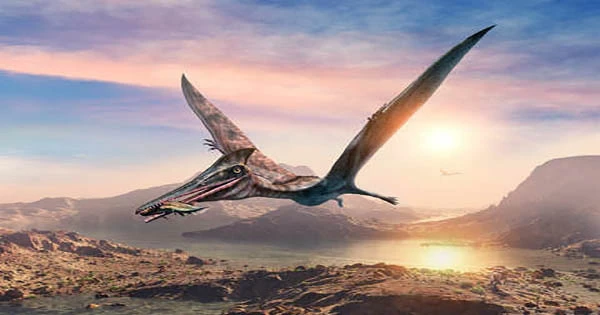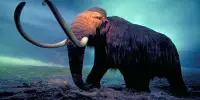Aerodynamics is notoriously difficult to scale, Palaeontologists are baffled as to how much larger species managed to become airborne in the past, given the difficulties huge birds face now. Now, four publications published at the same time have shed light on Quetzalcoatlus northropi, the world’s largest pterosaur and hence, the world is the largest creature to take to the sky, and how it got there (spoiler: it involves a rather large jump).
With a wingspan of 10-12 meters (33-40 feet), Q. northropi soared over the now-North American skies, outstripping even light airplanes, indicating that everything is bigger in Texas was true even in the Cretaceous.
However, because it lacked the thrust of a contemporary engine, it questioned whether it could even fly. Scientists from a variety of areas have worked on this, with help from Q. lawsoni, a tiny cousin published for the first time in one of the studies and named after the man who initially characterized the genus decades ago.
Quetzalcoatlus would have required leaping into the air at hip height in order for its wings to begin fluttering. For the tiny Q. lawsoni, it would be spectacular enough, but for Q. northropi, it represents a leap of nearly 2.5 meters (8. 2 feet). Even without the gigantic wings to help them, few species could achieve it today. Professor Kevin Padian of the University of California, Berkeley, who co-edited the articles, stated, “Pterosaurs had massive breastbones, which is where the flying muscles attach, so there is no doubt that they were excellent fliers.”
Landing was not likely to be graceful either. Padian told the Natural History Museum in London, “The animal had to flap its wings to stall and slow its descent before it lands with its rear paws and does a small hop.” “Then it goes away, putting down its front foot, assuming a four-legged stance, straightening itself out.”
The studies submitted roughly four years ago but kept back until all were ready for publication before published together in the Journal of Vertebrate Paleontology. The announcement by Q. lawsoni has been in the works for a long time. The original account of Quetzalcoatlus noted that the dozen enormous bones followed by a slew of smaller but comparable ones.
The presence of a smaller, more abundant species was hypothesized, but there was also the prospect of significant mortality among juvenile Quetzalcoatlus. The presence of two members of the genus has just recently been proven.
The studies refute the idea that Quetzalcoatlus was a carrion eater like modern-day condors because its beak was too fragile. Instead, the heron is the closest modern equivalent, grabbing fish and tiny reptiles off the water’s top as well as crustaceans from the muddy bottom. Quetzalcoatlus existed in a unique habitat, according to one study. On higher land, there was a subtropical forest with shallow alkaline lakes surrounded by palms.
It suggests that Q. lawsoni, with a wingspan of 5.5 meters (18 feet), was popular in this area and may have eaten on bivalves and mollusks, which were also numerous, according to fossils. “May have had a more solitary lifestyle and liked riparian settings,” the report speculates. Wellnhopterus brevirostris, a third, more distantly related pterosaur, also lived in the same environment. Another research describes the links between this and other pterosaur species.
Quetzalcoatlus flourished for millions of years until killed out by the impact that ended the Cretaceous period, as incredible as it may seem that an animal with such problems landing and taking off could endure. “These ancient flying reptiles are mythical, however, most people’s perceptions of them are creative rather than scientific, according to Padian. Twenty-four countries, for example, have included it on their postal stamps. Nonetheless; “As far as we know, this is the first complete view of the world’s largest flying mammal.”















